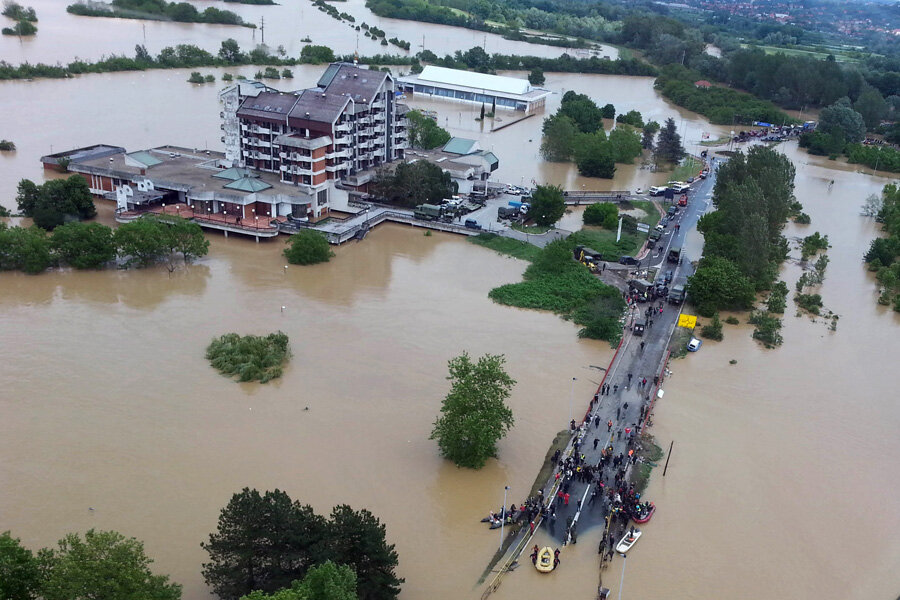Serbian floods threaten Belgrade power plant, unleash landslides
Loading...
| Belgrade, Serbia
Belgrade braced for a river surge Monday that threatened to inundate Serbia's main power plant and cause major power cuts in the crisis-stricken country as the Balkans struggle with the consequences of the worst flooding in southeastern Europe in more than a century.
At least 35 people died in Serbia and Bosnia in the five days of flooding caused by unprecedented torrential rain, laying waste to entire towns and villages and sending tens of thousands of people out of their homes, authorities said.
But the death toll is expected to rise as floodwaters started to recede in some locations, laying bare the full scale of the damage after three months' worth of rain fell on the region in three days, producing the worst floods since rainfall measurements began 120 years ago.
Bosnian Foreign Minister Zlatko Lagumdzija compared the flood damage to the carnage during the 1990's war that killed at least 100,000 people and left millions homeless. He said about 100,000 houses, 230 schools and health institutions were destroyed in the floods in Bosnia and about a million people lack drinking water.
The damage is "immense," he said, adding: "the only difference from the war is that less people have died."
The coal-fired Nikola Tesla power plant supplies electricity for half of Serbia and most of Belgrade. It is located in Obrenovac, the worst flood-hit town near Belgrade where some 7,800 people have been evacuated from their homes, which were mostly completely submerged in water. Some 2,000 people are still believed trapped in higher floors of buildings, without power or phone lines.
Predrag Maric, a Serbian emergency official, said Monday that the situation in Obrenovac is still critical. He said that so far thousands of soldiers, policemen and volunteers have managed to "defend" the power plant from the surging Sava River waters by building high walls of sandbags.
Villages between Belgrade and Obrenovac were drenched in muddy waters Monday, as people tried to reach their houses to see what was left inside.
Wearing rubber boots and pants, a man waded through the water toward his house in the village of Kalnic. Nearby, two cows were tied to a bus stop, nibbling at hay, apparently brought there from flooded barns.
In recent days, surging water has coursed through towns and villages in Serbia and Bosnia and to a lesser extent in Croatia, flowing across streets and into homes, sweeping bridges off their moorings. Sodden hills crumbled into landslides. Hundreds of buses and cars were stranded on flooded roads.
The Sava flood wave, expected to reach Belgrade Monday and peak by Wednesday, originated in the upper segment of the river, which forms the border between Bosnia and Croatia.
In Orasje, a Bosnian border town, efforts were made to prevent further spilling of the Sava at the places the barriers had broken. Ideas included dropping old trucks from helicopters or covering the gaps with wire frames and then reinforcing with sandbags.
The emergency force commander in the town, Fahrudin Solak, said the decaying corpses of drowned farm animals now represent a major health risk for the region.
"We are sending out mobile incinerators and we have asked for international assistance, to send us more incinerators to prevent diseases," he said.
Floodwaters have also triggered more than 3,000 landslides across the Balkans. In Bosnia, the water surge disturbed land mines left over from the region's war, along with warning signs that marked location of the unexploded weapons.





